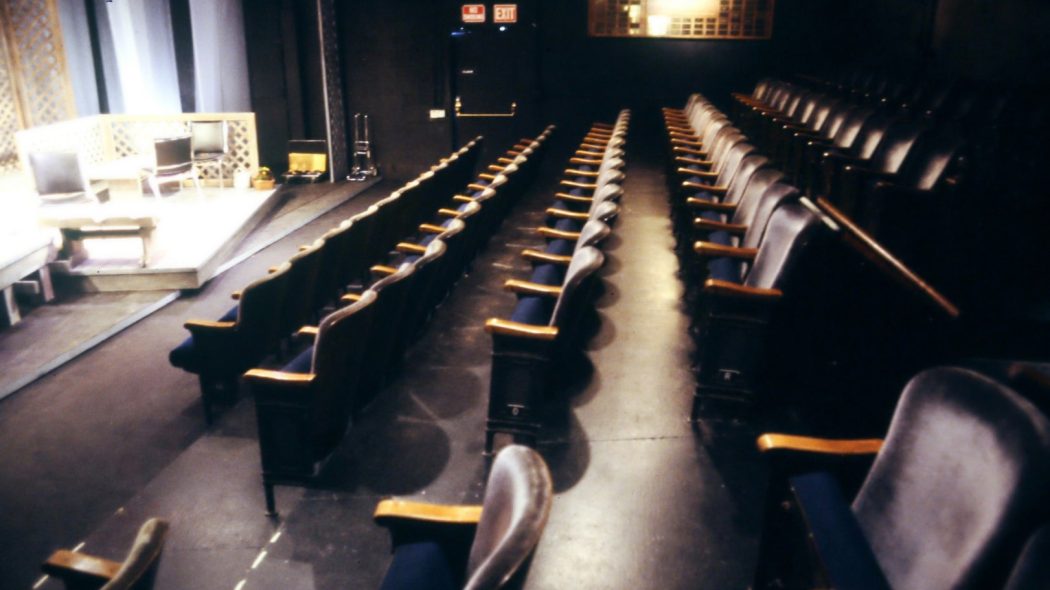

The Back Alley Theatre, founded by and led by producing directors Laura Zucker and Allan Miller, grew from a fledging volunteer organization in 1979 to a professionally run nonprofit that ranked among the ten largest budget theatres in Los Angeles by the time it closed in 1989.
The Back Alley Theatre’s purpose was to present original plays and works new to Los Angeles audiences in collaboration with the best of LA’s professional talent pool. The theatre’s focus was on unique voices and on creating daring and emotionally rich experiences in an atmosphere of professional discipline.
During the ten years it existed it produced more than 30 plays in its home facility in Van Nuys, transferred productions to other small and mid-sized theatres in Los Angeles, toured productions throughout California, and moved a production Off-Broadway to the Roundabout Theatre in NYC (THE FOX). Plays originated at the Back Alley were produced all over the country, including on Broadway (A WOMAN OF INDEPENDENT MEANS). Many were published and distributed nationally.
For two years the Back Alley hosted a Writers Lab to support Los Angeles playwrights. The Lab, conceived of and headed by Oliver Hailey, included two Pulitzer Prize winners among its members and developed two projects which were fully produced: 24 HOURS and HOT AND COLD. Dramatists Play Service paid the largest advance ever offered to date for the publication and licensing rights to 24 HOURS.
The Back Alley was the most established professional theatre in the San Fernando Valley, which had 1.5 million residents at that time. It served this population by producing creative, provocative dramatic production in the area in which its audience (as well as Zucker and Miller) lived and worked. Valley residents made up more than 75% of the theatre’s subscription audience. Productions were exceptionally well attended, averaging more than 80% capacity. More than 20,000 people a year saw productions at the Back Alley, and among its marketing innovations was the theatre’s conception and implementation of the first group subscription plan in the history of Los Angeles: the L.A. Theatre Pass. This project, which began in 1985, was a partnership of five smaller theatres: The Matrix, the Odyssey, Stages, LA Theatre Works, along with the Back Alley and brought in more than 2,600 pass holders in its first year.
Among its funders, the theatre counted the City and County of Los Angeles, the California Arts Council, the National Endowment for the Arts, the Rockefeller and the W. Alton Jones Foundations, and the California Community Foundation. The Back Alley had two active volunteer support groups: the Producer’s Circle and the Members’ Club. The theatre was well-known for its highly successful annual fundraiser, a celebrity doodle auction.
The theatre was named because the entrance to the warehouse-converted space was off an alley on Burbank Blvd. just east of Sepulveda. Although it started with only 45 seats and eventually grew to 93 seats, the facility was notable for its large stage and high ceiling. The theatre, which began renting the back half of the building (formerly a theatre known as Words and Music) took over the entire building as it grew. In 1986 a consortium of the board of directors bought the building and leased it to the theatre at cost.
The Back Alley’s leadership had aspirations to grow into the first mid-size theatre in the San Fernando Valley. While early indications were hopeful, including a line item in the state budget to renovate a historic post office building in Van Nuys, a development feasibility study undertaken in 1988 indicated that the needed fundraising goals would be hard to achieve. In 1989 the decision was made to end operations and the theatre went through a planned closure process: the building was sold, all bills paid, and all obligations to ticket holders fulfilled.


